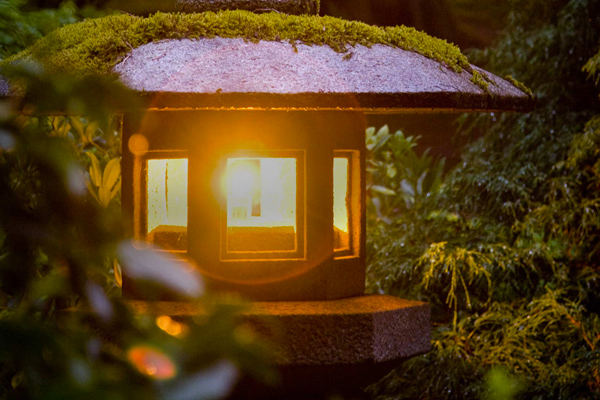
Portland’s Japanese Garden, where the first ever Mikagura ritual was performed in the U.S.
Earlier this summer, a historical Japanese Shinto ceremony was performed at the First Congregational Church in Portland, Oregon.
Presented by the Portland Japanese Garden, the Mikagura ritual is the first of its kind to ever be performed in the United States. The ceremony was conducted by 25 priests and shrine-maidens from the Tsurugaoka Hachimangu shrine in the city of Kamakura, Japan. The shrine is one of the oldest and most sacred Shinto sites in the country, dating back to 1063 A.D.
The 25 priests and shrine-maidens from Tsurugaoka Hachimangu shrine wore traditional Shinto silk-woven garments during the ceremony, and played musical instruments dating back hundreds of years. Some of the instruments dated as far back as 12th century A.D., and many aspects of the ritual have remained unchanged for a millennium.
Before the performance, a short sermon was given by Shigeho Yoshida, the Head Priest of the shrine in Kamakura. Yoshida spoke about the spirituality within nature and on the meaning of the Mikagura ritual within the greater Shinto tradition.
The teachings of Shinto, Japan’s ancient indigenous religion, revere spirits or gods called kami. Practitioners believe that these divine spirits inhabit the world in the form of natural beings such as animals, trees, and even some humans. The shrines and rituals of Shinto are devoted to honoring the individual kami, or gods. Unlike in many other religions where divine and temporal beings are separate, Shinto teaches that the kami inhabit the same plane of existence as our world. Shinto remains the largest religion in Japan, and over 80% of Japanese practice the Shinto faith.
The island nation holds roughly 100,000 Shinto shrines, many of which are centuries-old and still in use today. The Tsurugaoka Hachimangu shrine, from which the priests and shrine-maidens who conducted the Portland ceremony come, is one of the most important in the country. The shrine was constructed in 1063, but was relocated by Shogun Minamoto Yoritomo to its present location in Kamakura, the capital of the Kamakura Shogunate, in 1191. The temple is dedicated to Hachiman, the kami of archery and war, and Kamakura is the birth-place of the famous Japanese samurai warrior class.
The Mikagura ceremony itself is rarely performed outside of Japan, but Head Priest Yoshida stated that he wishes to share the ancient teachings of Shinto with the rest of the world.
